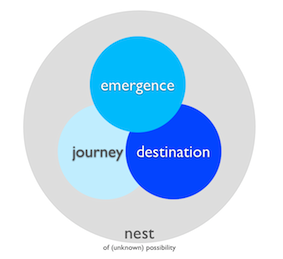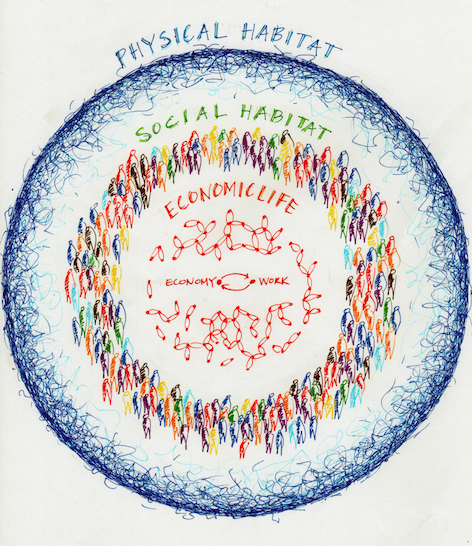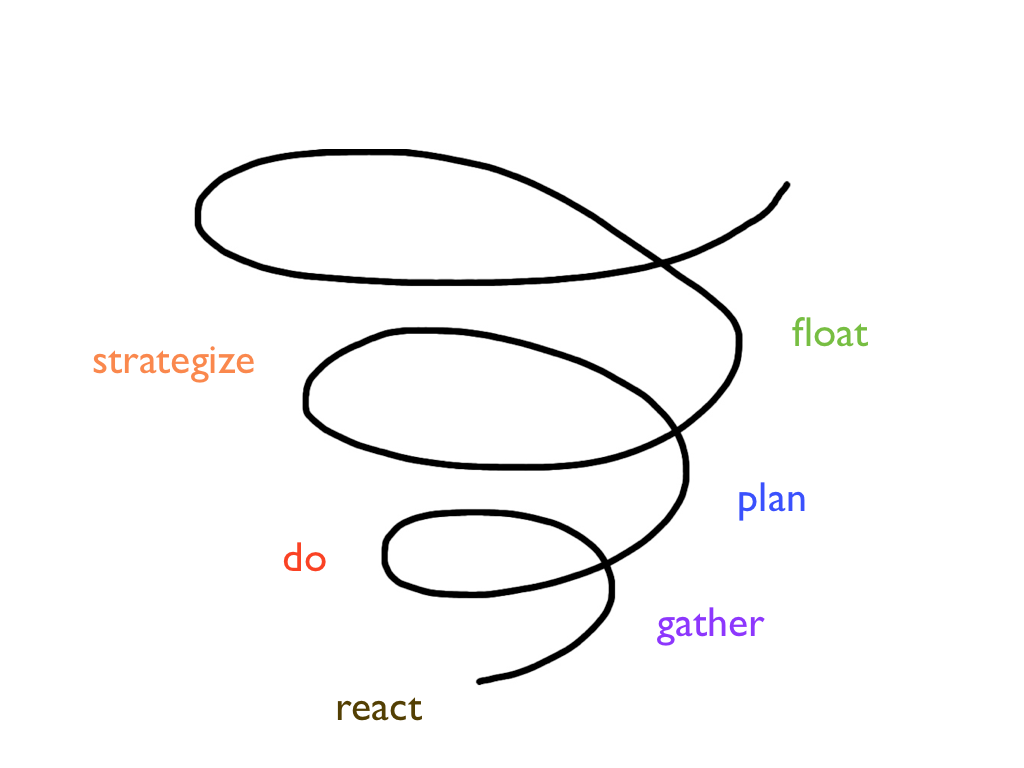Over the last several weeks I have been exploring Marilyn Hamilton’s 12 evolutionary intelligences for the city. They cover a great deal of territory and are so interconnected. I often find it difficult to grasp and discern the 12 intelligences and I am hungry for a simpler way to ‘hold’ them. 12 are too many for my being to juggle.
At this juncture, I distill all 12 evolutionary intelligences for cities into the following sentence:
Seeing the whole city as alive, evolving wholes that need nourishment allows us to navigate toward cities that serve citizens well, and citizens that serve cities well.
Let me unpack this sentence and reach back into each of the 12 evolutionary intelligences explored over the last few weeks to see how they fit, how they add up to this sentence.
Seeing the whole city
Seeing the whole city means using ‘maps’ to look at the city as a whole. Integral intelligence means looking at the city with integral maps. Four of these maps are explored in earlier posts. Here they are, with links to a description of them: the nesting holarchy of city systems and Spiral Dynamics integral; the four quadrants and scalar, fractal relationships.
Seeing the whole city also means seeing the four integral quadrants of the city:
as alive,
Cities grow out of our evolving interaction with our habitat. Our ecosphere intelligence allows us to be in relationship with our habitat and adjust and grow with it as life conditions change. When we engage our living intelligence, we see that the city is alive because its survives, it connects with its environment and it regenerates. If it doesn’t do this, it does not survive or thrive, but dies.
evolving wholes
Our emerging intelligence allows us to city the aliveness of the city and its complexity. The city is made up of many other whole, identifiable systems: citizens, families, organizations, neighbourhoods, etc. The city survives just as these systems survive, has a relationship with its environment as these systems do, and regenerates as these systems do. The relationship between the city system and its systems are always in relationship with each other, which creates the conditions for our evolving intelligence. The back-and-forth between cities and citizens, for example, fuels the development of all wholes.
that need nourishment
Cities and citizens alike need to be nourished to thrive. Inquiry intelligence allows us to unlock the potential of cities by simply noticing and appreciating what works in cities and working to get more of it. Inquiry also gives us the opportunity to imagine what we need that is well beyond “fixing”. A “fix” keeps us where we are, but curiosity about what naturally needs to come next, and the inquiry into that, is hugely nourishing. Asking and exploring questions endlessly nourishes our cities.
Then connections we make in cities, and the quality and quantity of those connections, also nourish the city. This is meshing intelligence, our capacity to make catalytic connections within and between whole systems. These relationships are self-organizing and hierarchical at the same time. The health of both nourish the city.
allows us to navigate toward
Our navigating intelligence allows us to inhabit two behaviours – aiming for a destination and the activity of discerning if on course to that destination. This intelligence is all about feedback loops, and the creation of feedback loops that allow us to see whether our actions are helping or harming our journey to where we wish to go. This intelligence is increasingly asking us to know where we wish to go and what “getting there” would look like.
cities that serve citizens well, and citizens that serve cities well.
In a very general way, this phrase is what we are aiming for. It is a superordinate goal. As all of the intelligences weave together, and as we spend time contemplating what a city that serves its citizens well looks and feels like, or how citizens that serve the city well would show up, we will begin to identify what this relationship is really about. Ultimately, this relationship is emerging and it will continue to emerge as the relationship between citizens and cities shifts and adjusts over time.
A parting thought for today
As we organize ourselves in cities, it is clear that how we “plan” is no longer a simple linear activity. It is one way to organize ourselves, but it does not encompass the complexity of the ways we organize ourselves. My writing to come will focus on this simple model to live the intelligences and make the relationship between citizens and cities more whole:

Organizing our cities requires a clear sense of destination to which we navigate. We are on a journey to make our way to this destination, yet the truth is we do not know what the destination really is. It is both clear where we are going and unclear. We have a sense of direction, yet we recognize that where we will end up has yet to emerge. Our destination, our journey and the emergent quality of our travels are all because of the 12 evolutionary intelligences, and supported by them. It’s a big trip we are on.
My next post will explore the practices and protocols that allow evolutionary intelligence – and our cities – to thrive. In the meantime, here is a quick and tidy set of links to the 12 evolutionary intelligences:
- Ecosphere intelligence – locating places
- Emerging intelligence – seeing wholeness
- Integral intelligence part 1 and part 2 – charting patterns
- Living intelligence – living and dying
- Inner intelligence – conscious capacity
- Outer intelligence – embodying right action
- Building intelligence – creating structures that flex and flow
- Story intelligence – culture of feeding each other
- Inquiry intelligence – releasing potential
- Meshing intelligence – enabling order and creativity
- Navigating intelligence – directional dashboards
- Evolving intelligences – imagining the future
_____ _____ _____
If you are interested in learning more about evolutionary intelligences relating to cities, you will be interested in the Integral City eLaboratory – Co-Creating the Future of the Human Hive.

